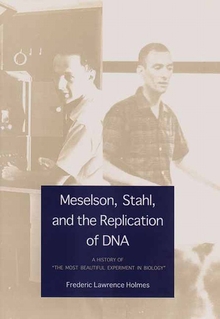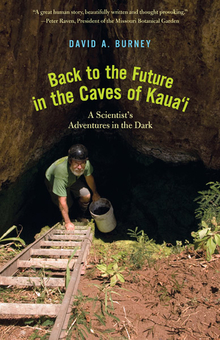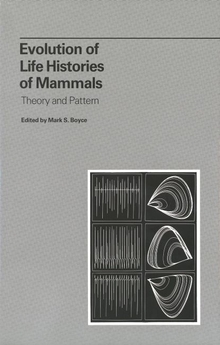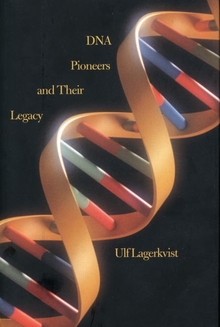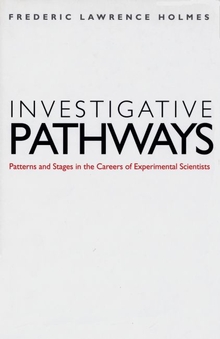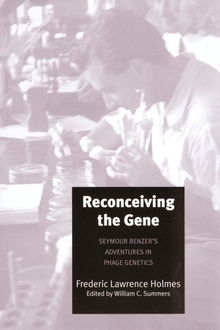Meselson, Stahl, and the Replication of DNA
WARNING
You are viewing an older version of the Yalebooks website. Please visit out new website with more updated information and a better user experience: https://www.yalebooks.com
A History of "The Most Beautiful Experiment in Biology"
Frederic Lawrence Holmes
In 1957 two young scientists, Matthew Meselson and Frank Stahl, produced a landmark experiment confirming that DNA replicates as predicted by the double helix structure Watson and Crick had recently proposed. It also gained immediate renown as a “most beautiful” experiment whose beauty was tied to its simplicity. Yet the investigative path that led to the experiment was anything but simple, Frederic L. Holmes shows in this masterful account of Meselson and Stahl’s quest.
This book vividly reconstructs the complex route that led to the Meselson-Stahl experiment and provides an inside view of day-to-day scientific research--its unpredictability, excitement, intellectual challenge, and serendipitous windfalls, as well as its frustrations, unexpected diversions away from original plans, and chronic uncertainty. Holmes uses research logs, experimental films, correspondence, and interviews with the participants to record the history of Meselson and Stahl’s research, from their first thinking about the problem through the publication of their dramatic results. Holmes also reviews the scientific community’s reception of the experiment, the experiment’s influence on later investigations, and the reasons for its reputation as an exceptionally beautiful experiment.
This book vividly reconstructs the complex route that led to the Meselson-Stahl experiment and provides an inside view of day-to-day scientific research--its unpredictability, excitement, intellectual challenge, and serendipitous windfalls, as well as its frustrations, unexpected diversions away from original plans, and chronic uncertainty. Holmes uses research logs, experimental films, correspondence, and interviews with the participants to record the history of Meselson and Stahl’s research, from their first thinking about the problem through the publication of their dramatic results. Holmes also reviews the scientific community’s reception of the experiment, the experiment’s influence on later investigations, and the reasons for its reputation as an exceptionally beautiful experiment.
Frederic Lawrence Holmes is chairman and Avalon Professor of History of Medicine at Yale University.
"Holmes meticulously shows how science is done, how inferences are made, and how the complex mix of creativity, technology/methodology, theory, and collaboration/competition can yield extraordinary results."—Alfred Tauber, Boston University
“Holmes has written a remarkable history of one of molecular biology’s most significant experiments. His recreation of a seminal time in the development of the field is masterful and detailed, and it is exciting reading for anyone interested in how experimentation is actually done in a molecular biology laboratory.”—David Baltimore, president, California Institute of Technology
“The Meselson-Stahl experiment was one of the seminal events in the history of molecular biology. Holmes lucidly explains its genesis, brings to life two of the early pioneers of the field and describes the scientific climate of the times. He also illuminates the elusive concept of ‘beauty’ or ‘elegance’ in science, epitomized by this legendary experiment.”—David Baltimore, President of California Institute of Technology, Nobel Laureate in Physiology or Medicine
“This unique book tells how the passion of two young scientists, spurred by technical challenges and intense community interest, led to the demonstration of the semi-conservative mechanism of DNA replication. By detailed comparison of memory and written records, Holmes strives to describe the messy day-to-day path to an elegant, definitive outcome. He reminds us that scientific advances ultimately depend on the minds of gifted individuals.”—Maxine F. Singer, President, Carnegie Institution of Washington
“This book vividly reconstructs the complex route that led to the Meselson-Stahl experiment and provides an inside view of day-to-day scientific research.”—Forthcoming Books & Journals
“The measure of a great technique is what it reveals and whether it lasts. The Meselson and Stahl experiment is still in wide use today. . . . Very few experimental methods have survived as long as the density-transfer idea. Thus, I expect that Holmes’ book will be read for many years to come, and justifiably so. . . . I urge every young scientist to read this book.”—Sydney Brenner, Nature Medicine
“A meticulous, masterly history. . . . The persistent reader is rewarded with the sensation of beginning to think like a pioneering and brilliant molecular biologist. . . . Recommended for general scientific audiences.”—Nathaniel Comfort, Science
“This book joins a growing library of outstanding historical studies of modern experimental biology. . . . [The] scholarship is impeccable and their analyses perceptive and revealing, not just of an age fast receding into the past, but of what Bruno Latour called ‘science in the making’.”—Robert Olby, Nature
"A brilliantly written book on the history of one of the most important biological experiments of all time. . . . This book is a must for anyone interested in the history and development of molecular biology."—Tony Reynolds, Biologist
ISBN: 9780300085402
Publication Date: November 10, 2001
Publication Date: November 10, 2001
528 pages, 6 1/8 x 9 1/4
121 b/w illus.
121 b/w illus.

